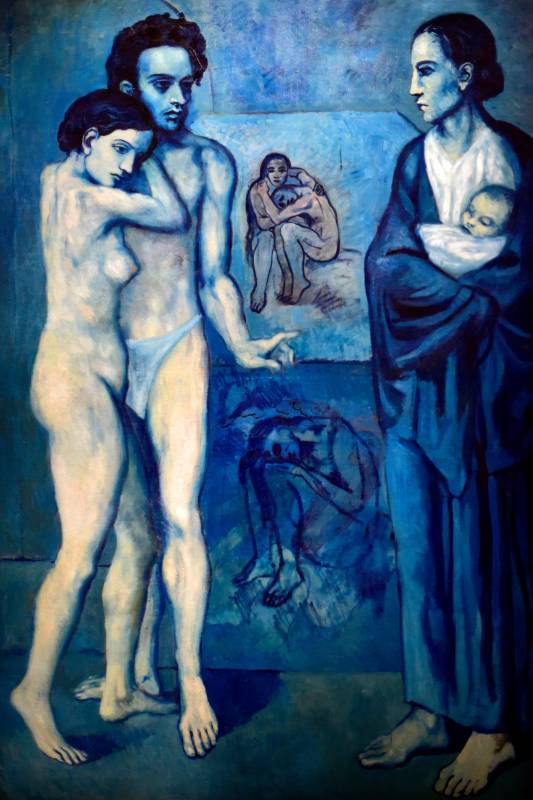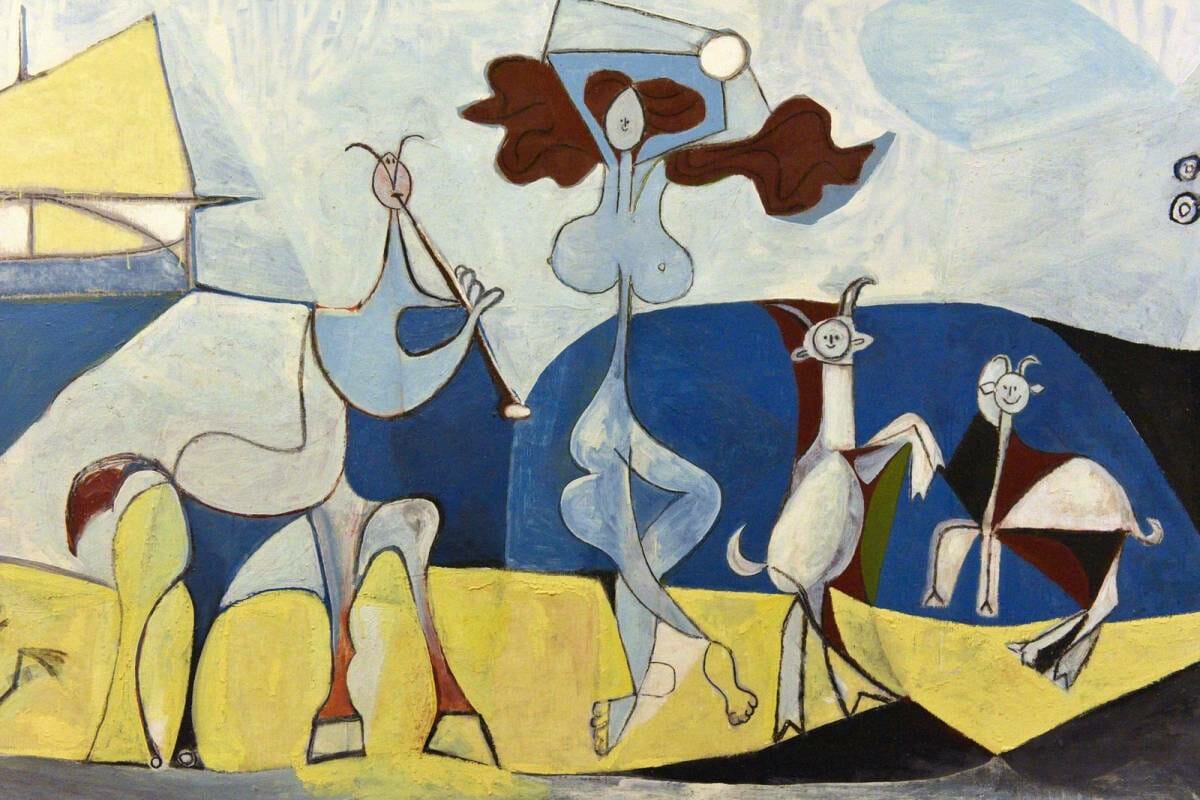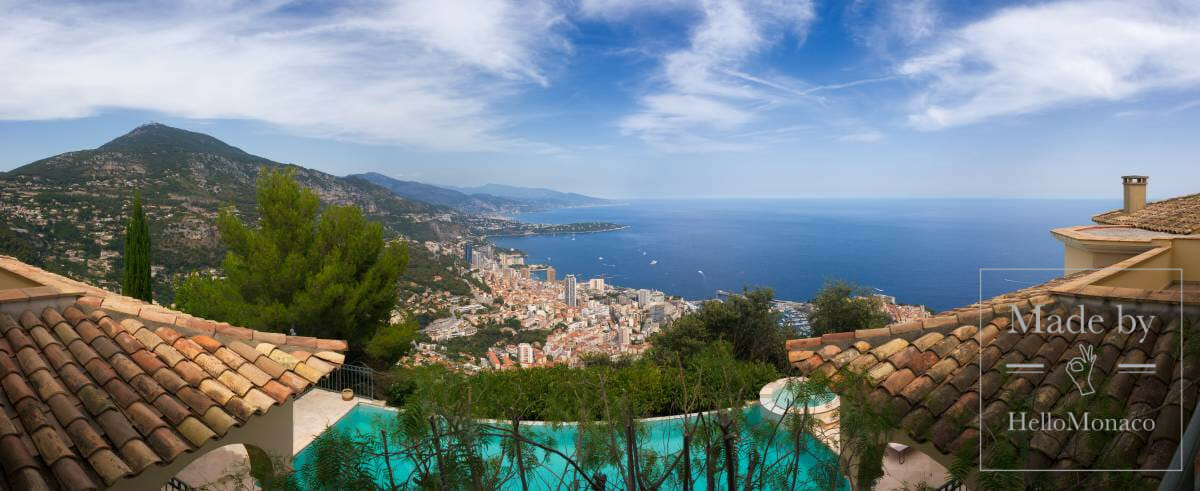Ah, Picasso! To some, he was a genius artist and a captivating celebrity. To others, he was a monstrous womanizer and a conniving father. To most, Pablo Picasso was a creator of both spectacular art and turbulent controversy. He left a permanent mark on the art world by skillfully pushing his creations in bold directions, spawning new artistic movements, including Cubism, and influencing culture the world over. History has yet to produce an artist as influential, prolific and scandalous as Picasso.
This year marks the 50th anniversary of Picasso’s death, which will be commemorated with forty retrospective exhibitions in eight countries, co-organized by the governments of France and Spain, including an exhibition at the Palais Princier de Monaco. The last three decades of Picasso’s life were spent on the French Riviera, a place he was deeply enchanted and inspired by. Picasso created some of his best-known pieces on the Côte d’Azur. He died on 8th April 1973 at the age of 91 in Mougins, just sixty kilometres from Monaco.

“Every child is an artist. The problem is how to remain an artist once one grows up.” — Picasso
Picasso was born in 1881 in southern Spain. According to his mother, Maria Picasso, Picasso’s first word was “piz”, a shortening of lápiz, the Spanish word for ‘pencil’. His father, José Ruiz, was an art professor and painter, specializing in realistic depictions of birds. At age seven, his father began training Picasso in figure drawing and oil painting. When he was just 13 years old, Picasso painted over his father’s unfinished sketch of a pigeon. Observing the precision of his son’s technique, José Ruiz felt that his son’s skill had already surpassed his own.
“When I was a child my mother said to me, ‘If you become a soldier, you’ll be a general. If you become a monk, you’ll be the pope.’ Instead I became a painter and wound up as Picasso.”

Picasso gets the ‘blues’ in Paris
Picasso travelled to Paris in 1900 and shared a cramped apartment with journalist and poet Max Jacob, who helped Picasso learn French. Max slept at night while Picasso slept during the day and worked at night. This period in Picasso’s life was one of severe poverty, cold and desperation. Much of his artwork was burned to keep his small apartment warm. At this time, Picasso’s Blue Period (1901–1904) began. Sombre paintings, rendered in shades of blue and turquoise, portrayed destitute mothers with children, sex workers and poverty-stricken figures.
“Inspiration exists, but it has to find you working.” — Picasso
Picasso’s Blue Period was heavily influenced by the suicide of his friend, painter and poet Carles Casagemas. Starting in 1901, Picasso painted several posthumous portraits of Casagemas culminating in the allegorical painting La Vie, in 1903. Painted at a time when Picasso was having no financial success, the painting was sold to a French art dealer only a month after it was created.
One year later, Picasso entered his ‘Rose Period’, characterized by brighter oranges and pinks. These paintings sometimes featured a harlequin in checkered clothing, which became a personal symbol for Picasso.

Pioneering Cubism and collage
Pablo Picasso and painter Georges Braque pioneered Cubism, an avant-garde movement that revolutionized European painting and inspired related movements in music, literature and architecture. In Cubism, objects are broken up and reassembled in abstracted forms. Picasso’s 1907 painting Les Demoiselles d’Avignon (playfully critiqued as a “hoax” by his rival, Henri Matisse) is considered the first proto-Cubist work.
Pablo Picasso and Georges Braque were also the first artists to use collage to create art. The two artists coined the term “collage” from the French verb “coller”, a method that revolutionized modern art. Picasso’s Still Life with Chair-Caning (1912) is considered to be Modern Art’s first collage.


Falling in love with a ballerina
Picasso designed set decorations and costumes for several Ballets Russes productions. While working on Sergei Diaghilev’s Parade, Picasso met and fell in love with ballerina Olga Khokhlova. To celebrate their engagement, Picasso painted Olga in an Armchair. The couple married in 1918 and had a son together. When Olga became very ill, Picasso began having an affair with 17-year-old model, Marie-Thérèse Walter. When Marie-Thérèse became pregnant, Olga was devastated and separated from Picasso. Because Picasso refused to split his property evenly with her, as required by French law, the two stayed legally married until her death from cancer in 1955.

Picasso harassed by Gestapo during WWII
Picasso didn’t join the armed forces for any country during World War I, the Spanish Civil War, or World War II. He protested war through his art. One of Picasso’s most famous works is Guernica, a poignant black and white piece depicting the German bombing of the Spanish town, Guernica. Painted in Paris in 1937, the work features a Minotaur and several human figures experiencing anguish, terror and death.
The large-scale (3.5 by 7.7 metre) oil painting was immediately exhibited at the 1937 Paris International Exposition before touring venues around the world and raising funds for Spanish war relief. Guernica is still regarded by many as one of the most moving and powerful anti-war paintings in history.
During World War II, Picasso remained in Paris while the Germans occupied the city. Because Picasso’s style did not fit the Nazi ideal of art, he did not exhibit during the time and was often harassed by the Gestapo. According to history book ‘Military Anecdotes’, during a search of Picasso’s apartment, a Gestapo officer saw a photograph of Guernica. “This painting, did you do that?”, he said. “No,” Picasso replied. “You did it!”
After the war, Picasso took a trip to the south of France, an experience that changed his life forever.

Picasso moves to the French Riviera
When Picasso visited the French Riviera, he immediately felt captivated and inspired by the light and colours of the Côte d’Azur. In 1946, Picasso spent one year living and working at Chateau Grimaldi in Antibes, where the Picasso Museum is now located. During this time, Picasso worked with a reduced palette of 12 colours, using only the paint he could buy at the local hardware store, the same paint local fishermen used for their boats. At the end of the year, he gave 23 paintings and 44 drawings to the city, including his well-known work, La Joie de Vivre (a parody of Henri Matisse’s celebrated work Bonheur de Vivre).

“The meaning of life is to find your gift. The purpose of life is to give it away.” — Picasso
Picasso and Matisse met in 1905 in Paris and had an infamous and productive rivalry up until Matisse’s death in 1954. “Only one person has the right to criticize me,” Matisse famously said, “it’s Picasso.” After Matisse died, Picasso said, “In the end, there is only Matisse.”
In 1948, Picasso moved to Vallauris, where he discovered ceramics and began to produce over 4,000 creations in the Fournas workshop. There, he met Jacqueline Roque, who worked at Madoura Ceramics and became his second wife in 1961. The couple were together for the remainder of Picasso’s life. During their relationship, Picasso painted over 400 portraits of his wife. One biographer described Picasso’s work during this time as “L’Époque Jacqueline”.

“The world doesn’t make sense, so why should I paint pictures that do?” — Picasso
In Vallauris, Picasso also worked on his mammoth mural, La Guerre et la Paix, for the local chapel. Preceded by about three hundred preparatory drawings, the tunnel shape of the space required several wooden panels to be installed on a specially designed structure.
Picasso began the mural by creating War. A horse-drawn hearse, a basket full of human skulls, shadows, flames and a book being trampled on evoke threatening intensity. Peace portrays a nursing mother reading to her child, musicians, rays of sunlight, fruit, a Pegasus, a dove and calming blue tones that contrast with the other half of the mural.
The famous Lascaux cave paintings, which were discovered that decade and opened the same year Picasso moved to Vallauris, may have inspired La Guerre et la Paix.
“It is not very bright in this chapel,” said Picasso at the time, “and I would like it not to be lit, for visitors to have candles in their hands, for them to walk along the walls like in prehistoric caves, discovering the figures, so the light moves on what I painted.”
In 1959 the Chapel of the Château de Vallauris became the Picasso National Museum of War and Peace and the mural is currently accessible to all.

“I’d like to live as a poor man with lots of money.” — Picasso
Picasso was one of history’s first artists to become extremely wealthy during his lifetime. He purchased properties all over the south of France. His time on the French Riviera stirred a new-found energy in his work. In his later years, he became more daring and his works became more colourful and expressive. From 1968 to 1971, he ceaselessly produced paintings and copperplate etchings.
In his 70s, Picasso had affairs with women of an even greater age disparity, some 45 years younger than the artist. Many of his paintings, ink drawings and prints at this time portray an old figure or a Minotaur as the lover of a beautiful, young woman. These works were, at the time, dismissed by art critics as pornographic fantasies of an elderly man. But after Picasso’s death, the link between these works as the very beginnings of Neo-Expressionism was solidified.
Picasso was one of the most prolific artists in history, creating an estimated 13,500 paintings. After he died, he left over 45,000 unsold works in his estate, including paintings, sculptures, ceramics, drawings, sketchbooks, prints and tapestries. Today, 15 of Picasso’s pieces are on the ‘List of most expensive paintings’ and have sold for between $75-205 million USD each.

Modernity and Classicism at the Palais Princier de Monaco
Monaco will be participating in the year-long series of retrospective exhibitions titled “Celebration Picasso 1973–2023” organized by the governments of France and Spain. The series of exhibitions will examine particular periods in Picasso’s life and the legacy he’s left behind.
From 19th September 2023 until 15th October 2024, the Princely Palace will open its doors for “Modernity and Classicism” an exhibition in the salons of the Grand Apartments. The exhibition will feature studies and original works by Picasso, placed in dialogue with the historical decor of the Palace. In 2015, following the discovery of several frescoes dating back to the Renaissance, HSH Prince Albert II launched an ambitious conservation and restoration campaign. The restoration places the Palais de Monaco in art history’s timeline.
“The End of the Beginning” at the Picasso Museum in Antibes
From 8th April 2023 until 25th June 2023, the “Picasso 1969–1972: The End of the Beginning” exhibition will be taking place at the Picasso Museum, located at the Grimaldi Castle in Antibes. Out of the 23 volumes cataloguing Picasso’s works by Christian Zervos, an entire 13 are devoted to the artist’s last 20 years. This demonstrates how rich and creative the last two decades of Picasso’s life were, with a pronounced acceleration in production between 1969 and 1972. At the age of ninety, Picasso reaffirmed that painting was, above all, a matter of desire as he painted with frenzy and urgency. In his very last paintings, an exuberance is expressed by bright colours and large formats, testifying to the creative power of the artist in his old age. He pulled off exhibitions in Avignon and at the Palais des Papes in 1970 and 1973. He revisited his familiar characters, including bullfighters and musketeers, as if the desire to paint was stronger than himself, pulling the artist towards his final adventures.
Picasso’s Ceramic Exhibition in Vallauris
From 6th May 2023 until 30th October 2023, the “Picasso’s Ceramic Creation” exhibition will be taking place at the Musée Magnelli. The exhibition will feature a set of emblematic works made by Picasso at the Madoura workshop between 1946 and 1971. The City of Vallauris Golfe-Juan will also be paying tribute to Picasso and his links to Vallauris with a weekend of festivities on 6th and 7th May 2023.
This year, as Picasso commemorations take place in Paris, Spain, New York and more, what better place to soak in Picasso’s art than on the French Riviera? 50 years after his death, Picasso’s contribution to culture may be felt around the world, but he left a particularly colourful and controversial mark across the entire Côte d’Azur through his explosive output of paintings, sculptures and mischief.









